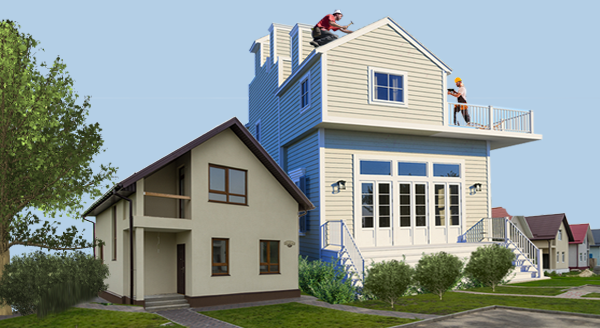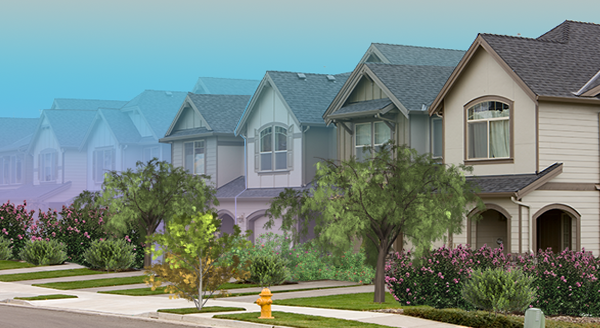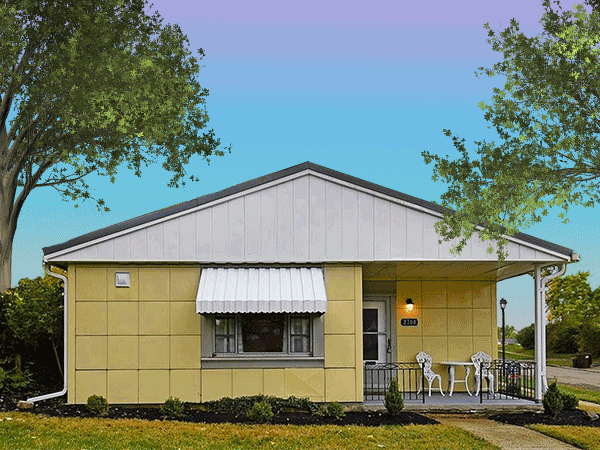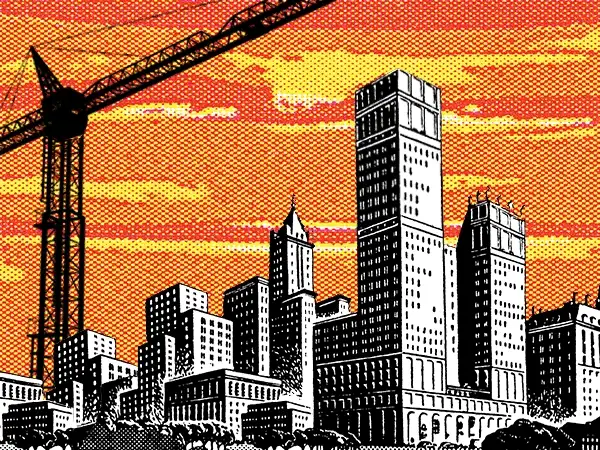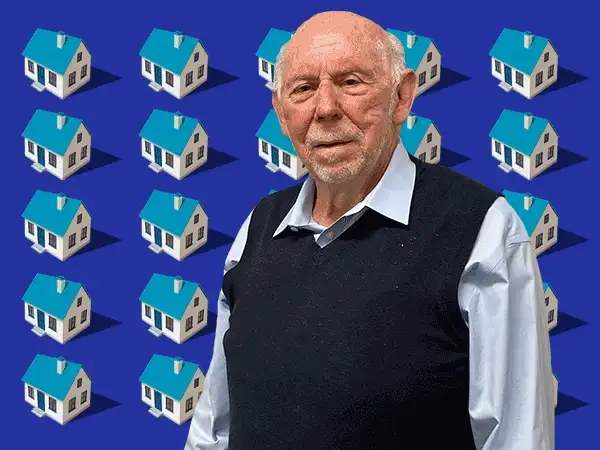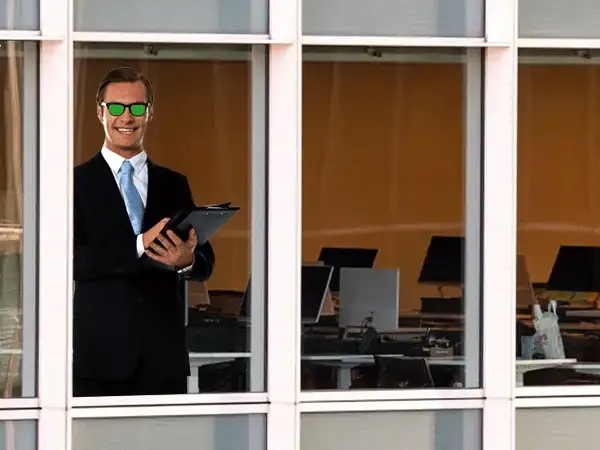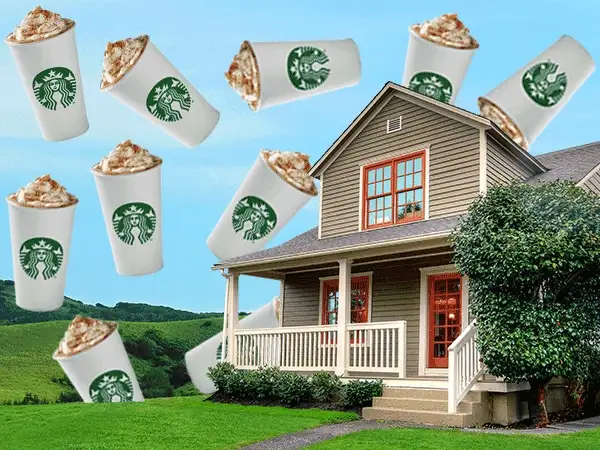The US has a severe shortage of affordable homes — and a staggering number of churches and synagogues with unused space for redevelopment

A few years ago, the pastor of Trinity United Methodist Church in Roanoke, Virginia, came to longtime member Michael Hicks to discuss a difficult subject. Should they close the church, a fixture in the city since the early 1900s, and redevelop the property?
Hicks, the church’s treasurer, had gone to Trinity since the 1950s. He attended its primary school and joined a youth fellowship group in his teenage years. He and his wife, Marsha, married there.
But the financial situation at Trinity, like tens of thousands of houses of worship in the US, had deteriorated over the last few decades. The congregation could barely afford routine maintenance and insurance costs, much less pay to fix the sanctuary’s leaky plaster roof.
“Our building was no longer serving us. It was the master of us,” says Joanna Paysour, the church’s pastor.
Trinity’s members considered selling the church’s annex to for-profit developers. They showed it to non-profits interested in office space. In the end, they found a solution that didn’t feel like an ending but a transition of the property to what Hicks calls “another mission”: affordable housing.
Trinity United Methodist Church. (Maribeth Mills)
All over the country, religious congregations are struggling to pay the bills for large houses of worship and adjacently-owned properties such as school buildings, parking lots, and cafeterias. Meanwhile, America’s housing deficit is at ~4.5m homes — with urban and suburban areas deploying zoning laws that make construction of affordable housing units particularly difficult.
Could churches and synagogues be a salvation for the housing market?
The potential for 100k churches to close
When Hicks grew up in the 1950s, Sunday services at Trinity would often feature standing-room-only crowds of several hundred people.
But by the 1980s, following an exodus of Roanoke residents to the suburbs, the sanctuary had more empty seats than souls in the pew. Covid compounded the situation in recent years, as membership plummeted from ~35 people to ~20 people, post-pandemic.
The same story has played out across many small and mid-sized American churches: attendance has dwindled as populations shift and secularism increases.
Some 70% of Americans, per Gallup, considered themselves members of a church or synagogue in 1992, a number that has fallen to 45%. According to Pew, ~33% of conservative synagogues and ~20% of reform synagogues closed between 2000 and 2020.
Olivia Heller/The Hustle
But the decline of religious lifestyle in America is only part of the reason many churches, synagogues, and mosques have struggled. Rick Reinhard, who focuses on church real estate and repurposing as principal consultant at the Niagara Consulting Group and Lakelands Institute, says they also face obstacles similar to those faced by small businesses:
- Soaring facility and insurance costs: While religious congregations are typically exempt from taxation, their insurance costs have gone up like everyone else’s. Building costs, according to Reinhard, can easily total $7-$10 per square foot annually — as much as $100k for a 10k square foot church.
- Covid: The pandemic exacerbated already difficult situations, like at Trinity.
- Consolidation: With Christian denominations in particular, Reinhard says, undifferentiated neighborhood churches have lost their base to large churches, much like how neighborhood mom-and-pop stores lost out to Walmart and, later, Amazon.
He says the most successful churches have either gone mega or gone online — a difficult move for institutions that follow ancient traditions.
All told, Reinhard estimates ~100k churches, roughly 25% of total US churches, could be at risk of closure in the coming years, with many more needing to downsize or find new revenue streams by selling off or repurposing their properties.
“Faith institutions…need to wake up and understand that they’re as much in the real estate business as they are in the religion business,” Reinhard says. “They own billions of dollars worth of properties, and they don’t understand that.”
When houses of worship close, the effects reverberate outside their walls.
A study by Partners for Sacred Places, a nonprofit that assists older houses of worship, and the University of Pennsylvania found that an average old church or synagogue contributes ~$1.7m in community economic impact annually, mostly through educational programs, social services, and cultural programs.
St. Joseph’s Cathedral in Buffalo, New York. (John Normile/Getty News)
In Buffalo, New York, where Reinhard used to work, the Catholic diocese announced plans to close about 50 churches last fall. Reinhard estimates another 30 Protestant churches and Jewish synagogues have closed or are on the verge of closure.
That’s more than $100m in economic impact that could disappear — unless the congregations find new uses for their properties.
Why some churches sell for $55m and some get no attention at all
Churches, temples, and synagogues have discovered all sorts of creative ways to convert their underutilized or unused spaces, typically by redeveloping their school buildings, offices, or parking lots. (It’s far more difficult — but not impossible — to adapt actual houses of worship for other uses, given their size and layouts.)
- A church in Wilmington, Delaware, leases its commercial kitchen space to entrepreneurs starting food businesses.
- First United Methodist Church of Miami sold its downtown property for $55m to a developer that built a 49-story condo building. The congregation got a space in the new building and used the proceeds to fund its endowment and build facilities like a pickleball court and rock-climbing wall that are open to the community.
Reinhard says some of his colleagues balk at churches cashing in. But he thinks the skepticism isn’t fully justified.
“What should a church do with that money?” he says. “If what they decide to do is buy a jet plane for the bishop it’s a bad thing. If what they decide to do is feed the hungry and clothe the naked and house the homeless, I think it’s a really good thing.”
In any case, affordable housing often ends up as the best option.
Olivia Heller/The Hustle
For-profit developers, for one thing, often find church and synagogue properties unsuitable for redevelopment. (Few are as fortunate to be located in prime real estate areas like downtown Miami.) And affordable housing fits the mission of a religious congregation.
“Churches have had a long history of serving people who are in need of help the most,” says Dana Dabek, director of transition services for Partners for Sacred Places. “And I think that affordable housing ends up being a natural extension of the work a lot of churches are doing.”
In many areas, affordable housing requires rezoning and leads to NIMBY opposition from neighbors. But cities and states, such as Washington and New York, have either passed or considered legislation to incentivize and streamline the process of building affordable housing on church land.
California’s SB4, enacted in 2023, exempted religious congregations and nonprofit colleges from zoning laws that would otherwise bar multifamily, affordable housing if they followed certain development standards.
The state has ~171k acres of developable land owned by houses of worship or nonprofit colleges — roughly 5x the size of the city of Oakland, according to a study by the University of California, Berkeley’s Terner Center for Housing Innovation.
Still, that doesn’t mean redevelopment is easy.
In Long Beach, California, New Philadelphia A.M.E. Church partnered with developer Logos Faith Development to convert an annex previously used for daycare into affordable housing, hoping to derive new revenues from the housing to help it maintain its church building and provide services for the community.
“One of the things that we have got to learn in 2025, realistically, in the 21st century, is that no church can sustain itself by the offering plate,” says New Philadelphia A.M.E. Pastor Darryl Walker.
But it took time to get the congregation on board and secure financing, especially as building costs soared. The project has taken three years, with construction expected to start later this year.
Olivia Heller/The Hustle
The model for Black churches, including A.M.E. churches like New Philadelphia, was to buy “the whole block,” says Pastor Martin Porter, founder and CEO of Logos Faith Development, to empower their neighborhoods. They want to ensure they stay influential and financially strong as their church properties transition, and some requirements of SB4, he says, can force them into diminishing returns.
“African-American denominations and churches are being asked to put up their land to make a dent [in California’s housing shortage],” Porter says. “That has got to work for all parties. It can't just be to meet a goal of the city or the state to get more housing. It's got to work for the church, too.”
Pro bono lawyers and neighborhood cooperation
In Roanoke, Trinity’s members decided to sell the church property for $70k to Restoration Housing, a local nonprofit that focuses on redeveloping historic buildings.
The group made plans to convert the church’s annex into 15 affordable elderly housing units and restore the church building so it could be rented out by religious groups or for weddings.
The infusion of money helped Trinity continue to host ministry services, such as an afterschool children’s literacy program and a Friday night coffeehouse/concert venue.
But the process still wasn’t easy. Isabel Thornton, executive director of Restoration Housing, says the congregation, as a nonprofit, had to get court approval to sell their property. It also had to go through a rezoning process during which Thornton was concerned about NIMBY rejections.
Reinhard, the consultant involved in church real estate, says these types of obstacles can prevent churches from selling their properties. He would like to see more incentives for church redevelopment and funding for churches to study redevelopment plans.
In spite of the complications, everything worked out for Trinity.
A pro bono lawyer helped get court approval for the sale, and most people in the neighborhood supported the redevelopment. Thornton believes that the church’s longtime footprint made residents who might’ve protested new housing developments comfortable with the proposed housing.
From left: Stained glass at Trinity UMC, Trinity UMC’s sanctuary, Michael and Marsha Hicks. (Courtesy of Michael and Marsha Hicks)
Trinity held its last service in late 2023, a few weeks before the Roanoke city council voted to approve the rezoning. The housing is scheduled to be finished next spring.
Members like Michael and Marsha Hicks have joined nearby Greene Memorial United Methodist Church. Michael never wanted to see Trinity UMC close, but he's seen plenty of churches in the area with broken windows and other damages and feared the same fate for Trinity.
In the end, Hicks says, the redevelopment felt like God saying, “This is a chance to do something good with this property.”
Housing And Real Estate


